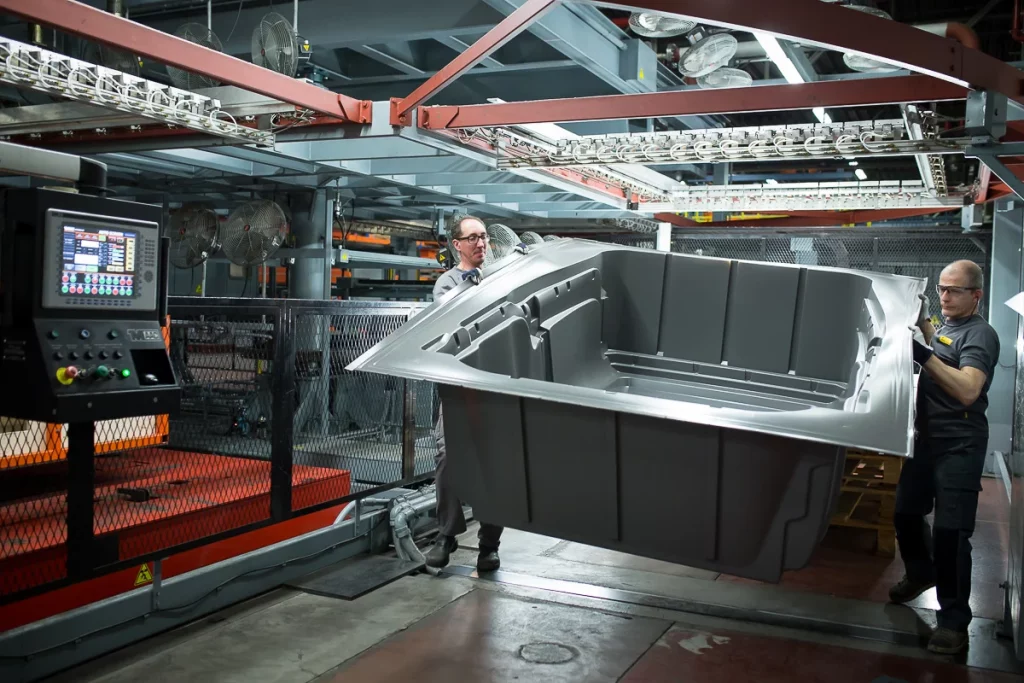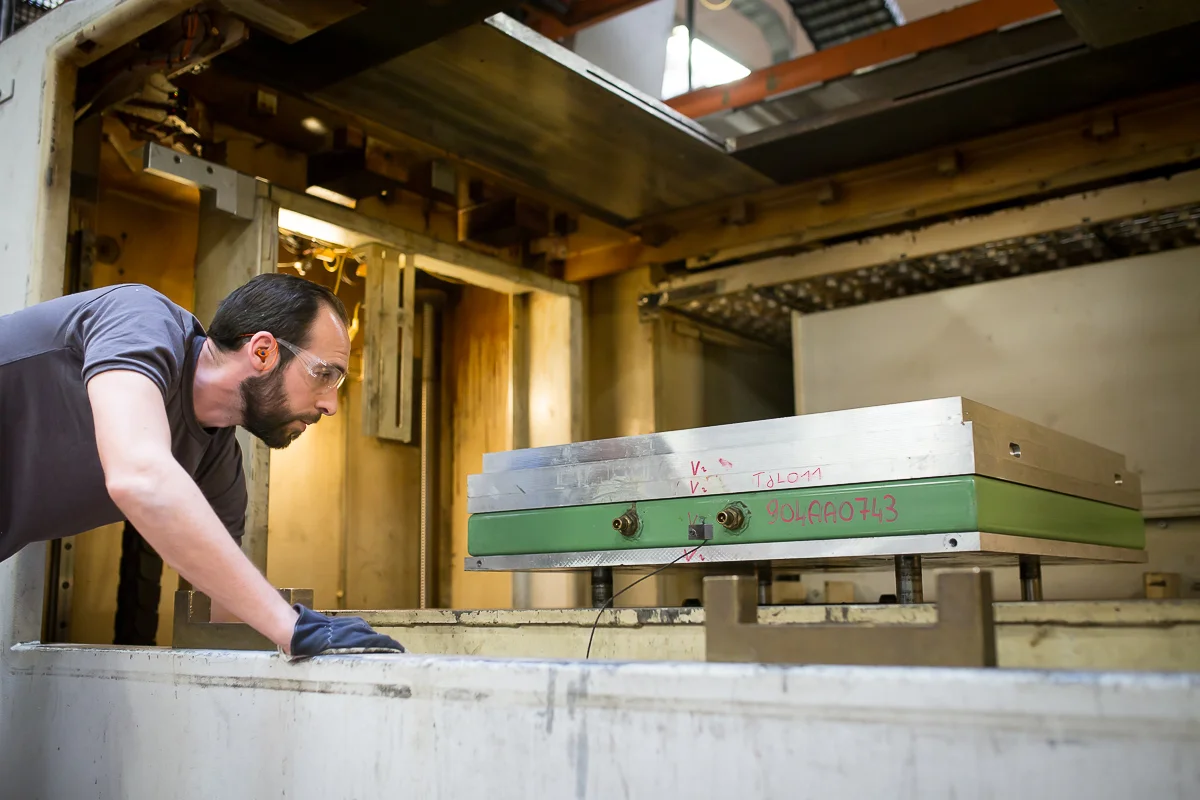1- What is thermoforming ?
Thermoforming is a manufacturing technique used to create custom plastic parts.
The most common technique involves heating a sheet of plastic until it becomes flexible. The dedicated plastic sheets used are known as thermoplastics, which can be composed of various materials such as ABS, polycarbonate, polypropylene, and others. The thermoplastic is then placed on a mold with the desired shape, and a vacuum is applied to make the softened plastic sheet perfectly conform to the mold’s shape. Once the plastic has cooled and hardened, it retains its shape, and the part is finished.
For more information on other thermoforming techniques, please refer to the bottom of the article.
Thermoforming offers great versatility in terms of products, catering to both durability and consumption needs.
It allows for the manufacturing of simple pieces like panels and containers, as well as complex parts that require compliance with strict standards, such as medical devices or automotive components. This manufacturing technique provides the ability to produce high-quality parts at a low cost, meeting the requirements of small and large production runs with a variety of sizes and materials.
Thermoforming proves to be a versatile and cost-effective choice for producing a wide range of products across multiple industries. Its cost advantages, quality, and customization possibilities have led to its increased utilization in various industrial sectors.
2- Thermoforming, an environmentally friendly choice
Thermoforming also offers recycling advantages, both in terms of the materials used and the generated waste and production scraps.
Regarding the materials used, as mentioned earlier, thermoforming employs recyclable materials such as ABS, polycarbonate, and polypropylene. This means that thermoformed parts can be easily recycled at the end of their life cycle, contributing to reducing plastic waste and preserving the environment.
The recycling of thermoplastics allows for their transformation into new products or materials for other applications, enabling infinite renewal while significantly reducing the demand for virgin raw materials and the associated greenhouse gas emissions from their production.
Additionally, when thermoforming generates production waste and scraps, they are collected, sorted, and recycled to manufacture other plastic products. This helps to reduce waste, valorize materials, and preserve natural resources.
3- Vitalo Group, a leader in thermoforming
With over 85 years of experience, Vitalo Group is a recognized leader in the field of thermoforming. Our unmatched expertise is reflected through our two distinct thermoforming brands: Vitalo and Starplast.
At Vitalo, we specialize in manufacturing opaque plastic thermoformed parts. We offer our customers a wide selection of materials, configurations (size, thickness, etc.), and finishing options (two-color, high gloss, etc.) to precisely meet their specific needs. Our goal is to ensure their complete satisfaction by providing high-quality customized solutions. Our Vitalo brand parts are manufactured in our factories located in Belgium, France, Slovakia, and China.
On the other hand, our Starplast brand is renowned for its unique thermoforming technology, allowing us to produce transparent plastic parts with a clear and distortion-free vision. This particular expertise enables us to meet the stringent requirements of regulated industries such as aerospace and automotive. The Starplast brand proudly qualifies as « Made in France. »
At Vitalo Group, close collaboration with our customers is paramount. Our highly skilled engineering teams work hand in hand with you to ensure that each thermoformed part perfectly matches your specifications and requirements. Your satisfaction is our top priority.
Feel free to contact us for any inquiries. We are always excited to collaborate on new projects and push the boundaries of what is possible in thermoforming.
Trust Vitalo Group to be your partner in all your thermoformed creations.

Most common thermoforming techniques:
Blow Forming: This is a free-form thermoforming technique. Blow forming does not require a mold to shape the heated plastic. Instead, a machine uses air jets to blow the plastic into a bubble until the final piece is formed.
Twin-Sheet Forming: This involves simultaneously forming two layers of thermoplastic and combining them to create a single object. This technique is perfect for meeting specific requirements where the product needs to be hollow or have a double wall.
Matched-Mold Forming: This method of thermoforming is used to manufacture highly detailed objects. It requires the use of a male and female mold to shape the heated plastic sheet. The forming machine applies pressure so that the molds come together on the plastic sheet, imprinting their shape and pattern on it.
Drape Forming: In the draping process, the heated plastic sheet is delicately draped over a mandrel with specific patterns. By applying pressure to the plastic sheet, the mandrel shapes the final piece.
Mechanical Forming: This is a thermoforming technique that uses direct mechanical force to shape the preheated plastic sheet. A central plug applies pressure to the pliable sheet, forcing it to fill the space between the plug and the mold. This allows surface patterns to be imprinted on the plastic sheet. Mechanical thermoforming is preferred when precise and detailed final parts are required.
Pressure Forming: This process utilizes a heated plastic sheet and vacuum to remove the air and press the sheet against a mold. However, it involves an additional step. Once the air is removed, a tool applies pressure to the formed plastic for a more precise final shape. Pressure forming is chosen when the thermoformed part requires a higher level of detail.
